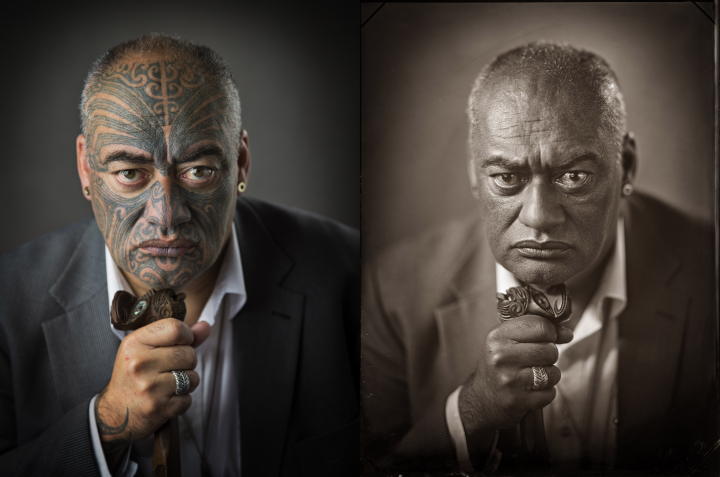Identity erased, now restored?
Identity erased, now restored?
May 15, 2019—Tattooing, as this Māori post figure shows, is a form of personal and social identity. And nothing is more personal than facial ink markings.
When white settlers occupied New Zealand in the 1900s, they encountered the Māori, Indigenous people who often bore facial tattoos—known as tā moko—as marks of affiliation and valor. Colonial-era photographers took portaits of the Māori using a type of wet plate processing that essentially, perhaps intentionally, erased the distinctive marks—in essence erasing their identities. Today, the artist Michael Bradley has paired contemporary portraits taken with the old format with those from state-of-the-art digital cameras. The result is a striking corrective.
Image: Michael Bradley’s photograph of Gary Shane Te Ruki Source: Jasmine Weber, “How a 19th-Century Photographic Technique Erased a Māori Tradition,” Hyperallergic, May 13, 2019


